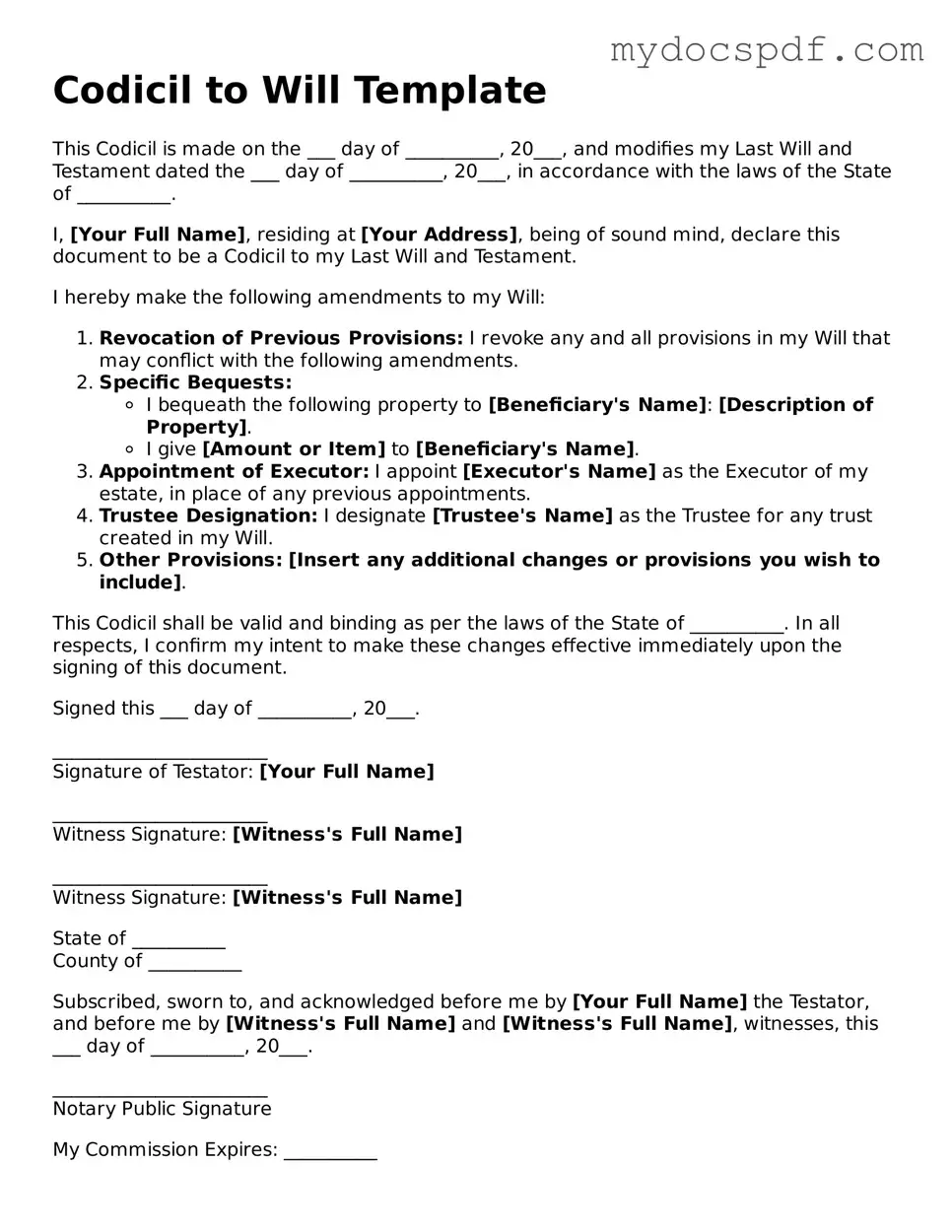Codicil to Will Template
This Codicil is made on the ___ day of __________, 20___, and modifies my Last Will and Testament dated the ___ day of __________, 20___, in accordance with the laws of the State of __________.
I, [Your Full Name], residing at [Your Address], being of sound mind, declare this document to be a Codicil to my Last Will and Testament.
I hereby make the following amendments to my Will:
-
Revocation of Previous Provisions: I revoke any and all provisions in my Will that may conflict with the following amendments.
-
Specific Bequests:
- I bequeath the following property to [Beneficiary's Name]: [Description of Property].
- I give [Amount or Item] to [Beneficiary's Name].
-
Appointment of Executor: I appoint [Executor's Name] as the Executor of my estate, in place of any previous appointments.
-
Trustee Designation: I designate [Trustee's Name] as the Trustee for any trust created in my Will.
-
Other Provisions: [Insert any additional changes or provisions you wish to include].
This Codicil shall be valid and binding as per the laws of the State of __________. In all respects, I confirm my intent to make these changes effective immediately upon the signing of this document.
Signed this ___ day of __________, 20___.
_______________________
Signature of Testator: [Your Full Name]
_______________________
Witness Signature: [Witness's Full Name]
_______________________
Witness Signature: [Witness's Full Name]
State of __________
County of __________
Subscribed, sworn to, and acknowledged before me by [Your Full Name] the Testator, and before me by [Witness's Full Name] and [Witness's Full Name], witnesses, this ___ day of __________, 20___.
_______________________
Notary Public Signature
My Commission Expires: __________
